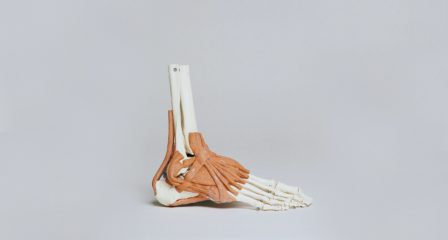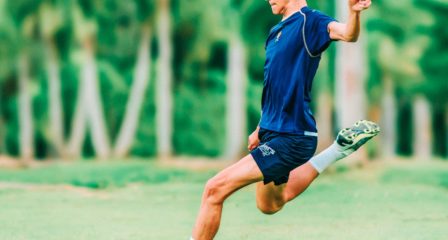In previous decades, you could not have a discussion surrounding athletic hip and groin pain without the term ‘osteiits pubis’ being referred to. This decade, the same could be said for femoroacetabular impingement, or ‘FAI’.
What is FAI?
FAI syndrome may cause hip and groin pain in active individuals (often active young adults aged 18-50) due to extra bone formation most commonly at the femoral head-neck junction, creating a ball and socket joint that does not absorb forces as effectively. This can result in pain, and damage to structures within the hip joint. This extra bone formation typically occurs during skeletal growth phases of early adolescence in individuals who participate in significant volumes of impact sport, similar to the common ‘osgood schlatters’ lump on the knee.
Often symptoms do not occur until the individual is into their 20’s and 30’s, with the repeated adverse loading over time potentially resulting in deterioration of the surrounding tissues. Tears to the labrum (cartilage surrounding the rim of the socket) and more significant cartilage defects may be the result with studies demonstrating a prevalence of 54% and 64% respectively, in individuals with symptomatic FAI (Kemp et al 2018). It is however unclear, how many individuals have such bony morphology and never have any symptoms.
PREVENTION
Historically the young athletic population have been encouraged to exercise and participate in organised sports without restriction, yet be warned that strength and conditioning may stunt their growth. It may be time to reverse this trend and look to improve the ability of young athletes to transmit forces through the hip with appropriate strength and motor patterning drills. Early research indicates that particular movement strategies may leave some individuals more susceptible to FAI, and should be addressed specifically.
More careful consideration of the athletes training load and intensity is a key component to prevention. Substituting some impact sessions for non impact options such as cycling or swimming may provide opportunities for enjoyment and conditioning, whilst minimising the risk of developing FAI.
MANAGEMENT
Conservative management should always be the first line of treatment for those presenting with symptomatic FAI. This may involve:
- Activity modification:
- The volume of training/exercise/activity that may be provocative
- The type of activity: some tasks with impact (running) or hip flexion (bike) may be more provocative than exercises such as swimming
- Modification of intensity/terrain/hills/directional change
- Soft tissue release and dry needling to improve hip mobility, hip position, muscle function and associated muscular pain
- Strengthening and rehabilitation exercises to improve hip stability and load transfer.
- Self release techniques
- Antiinflammatories and cortisone injections in consultation with GP/sports doc
When an individual’s symptoms fail to respond to a period of conservative management, seeking out a specialist opinion is warranted. Particularly in the presence of labral tears and chondral defects (cartilage wear), arthroscopic procedures may be required to improve the ability of the hip to absorb load, and protect the joint surfaces from earlier degeneration. Post operatively, the individual should diligently strengthen under the guidance of their physio, making the most of their newly improved joint surfaces.
It is important to appreciate that an effective period of strengthening is considered 6 months plus, ideally in a gym environment, and under the supervision of a physiotherapist. Early post op or base level home exercises can be an effective entry level but ust be progressed significantly to see improvements translate into high level tasks such as running and sport.
REFERENCES:
Heerey JJ, Kemp JL, Mosler AB (2018). What is the prevalence of imaging-defined intra-articular hip pathologies in people with and without pain? A systematic review and meta-analysis. British Journal of Sports Medicine, 52:581-593.
Todd C, Thoreson O, Swärd L, Karlsson J, Baranto A (2016). Pelvic Retroversion is Associated with Flat Back and Cam Type FemoroAcetabular Impingement in Young Elite Skiers. J Spine 5: 326. doi:10.4172/2165- 7939.1000326
For more information on Physiotherapy at The Injury Clinic, please click HERE
To book a consult online, please click HERE



